If it begins to rain in the Hantam in March, and if the rain measures more than 10mm, you can almost set your timer: After a long, dry, and very hot summer, the Brunsvigias will bloom, three weeks later. You have those weeks to plan a visit to see the sight of a lifetime. In the baked red earth of this high escarpment region of South Africa’s Northern Cape Province, the Brunsvigia bulbs sense the moisture and begin to develop buds. Each bulb produces a stout stem that supports dozens of flowers in a starburst of pink—pale pink, hot pink, rose pink, and, rarely, white. From 12 to 16 inches across, the blooms of Brunsvigia bosmaniae (also known as candelabra lilies) explode across the dry veld, leafless and incongruous among the dry silver-toned grasses, the red soil, and the tiny just-germinated seedlings of the more-famous spring flower display to come.
Photography by Marie Viljoen.


Brunsvigia season is muted, compared to the more famous spring wildflower riot that sees thousands of local and international visitors flocking to South Africa’s semi-arid, winter-rainfall Hantam and broader Namakwaland regions. For this spectacular early autumn botanical event, there is little fanfare, no lily alert system. Now, in March or April, it is easy to find accommodations and you have only the flowers and elegant groups of blue cranes for company. As evening approaches, the scent of the lilies begins to grow. At night, the clean, clear sky swarms with stars, while the veld below swarms with thousands of lilies, like a pink reflection of the Milky Way above.
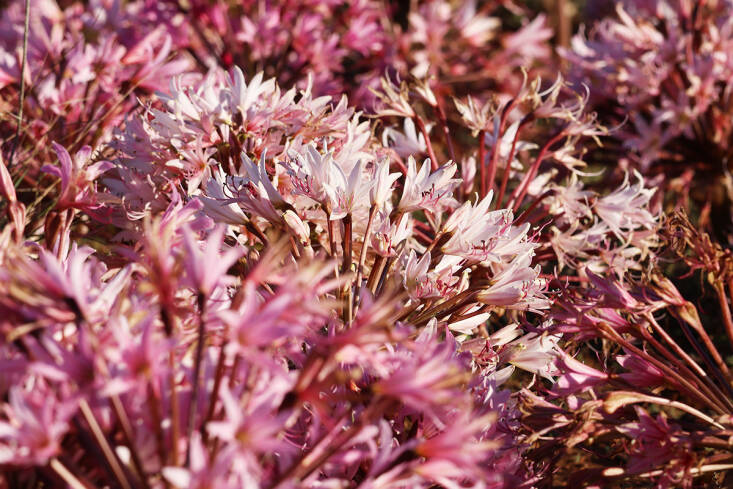
Unlike many of the spring flowers, Brunsvigia blooms are impervious to wind and to overcast skies—they stay open, day and night, and are visited by pollinating butterflies and bees, and, mostly, by moths drawn to their intense night-scent.

Brunsvigia bosmaniae is an Amaryllid, which is botanical-speak for members of the Amaryllidaceae family, and these candelbara lilies do not bloom alone after those early autumn rains. Around the town of Nieuwoudtville, the veld is also lit up by the starbursts of Crossyne flava, a yellow-flowered Amaryllid with yellow or amber ray-like stems, petite Brunsvigia striata, and in, in dry riverbeds, the startling blooms of river lilies—Crinum variabile.
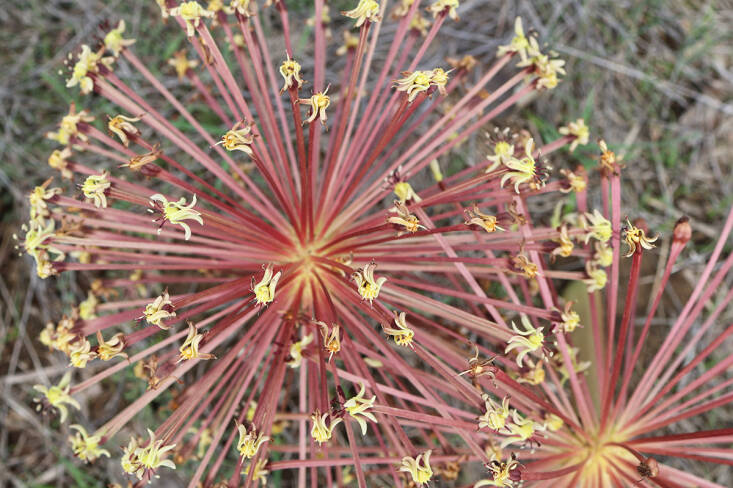
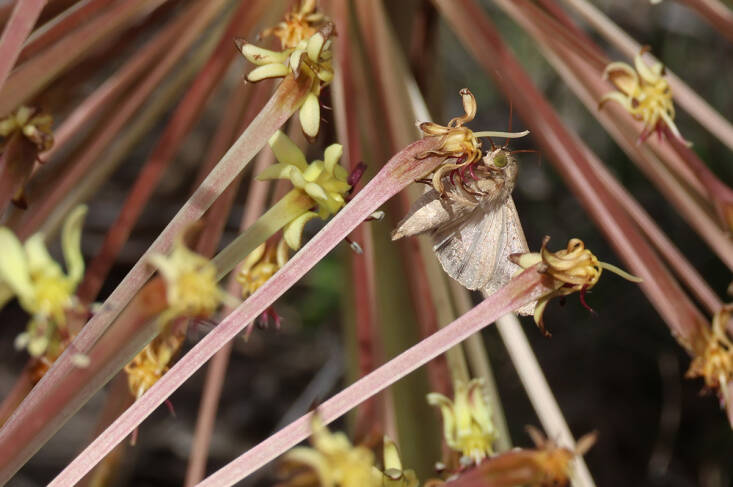

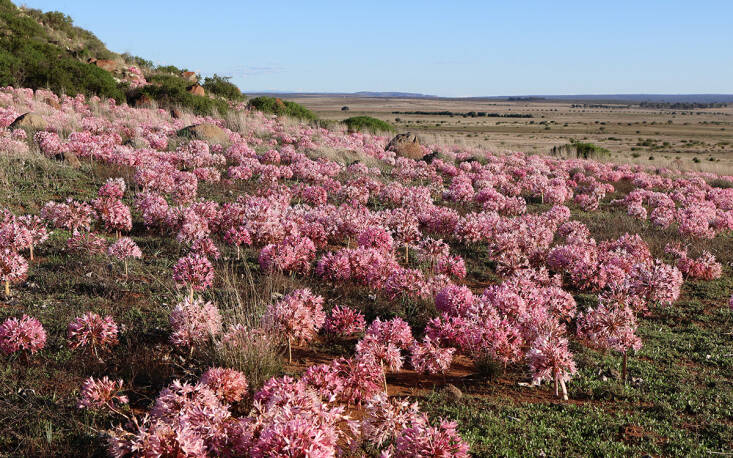
While Brunvsigia bosmaniae blooms en masse in several pockets of the Northern Cape and Western Cape, the most accessible viewing areas are near Nieuwoudtville. The Nieuwoudtville Flower Reserve offers a short drive right up to the effusive geophytes. Between the landscape below and the red dolerite hills behind, the flowers seem otherworldly.
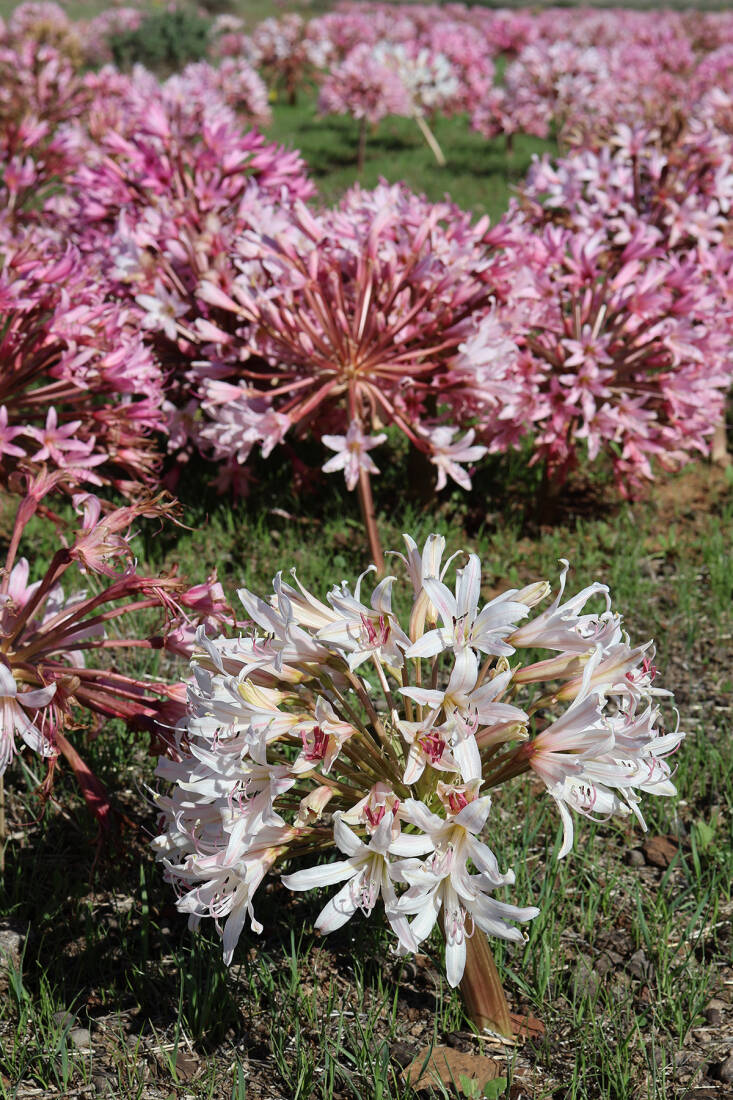
At the Hantam National Botanical Garden (which is far wilder than its horticultural name suggests) you can hike to view the Brunsvigias. The land is on the sight of a former sheep farm—Glenlyon— owned by Neil MacGregor, a forward-thinking conservationist and eco-farmer who managed his farm to encourage floral diversity.


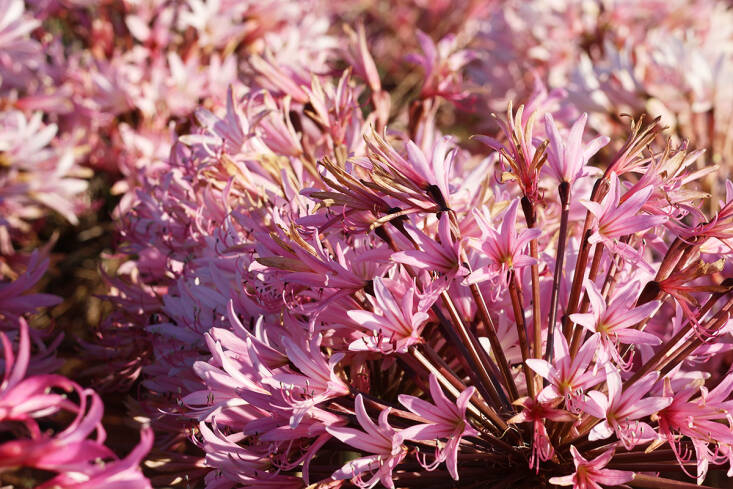
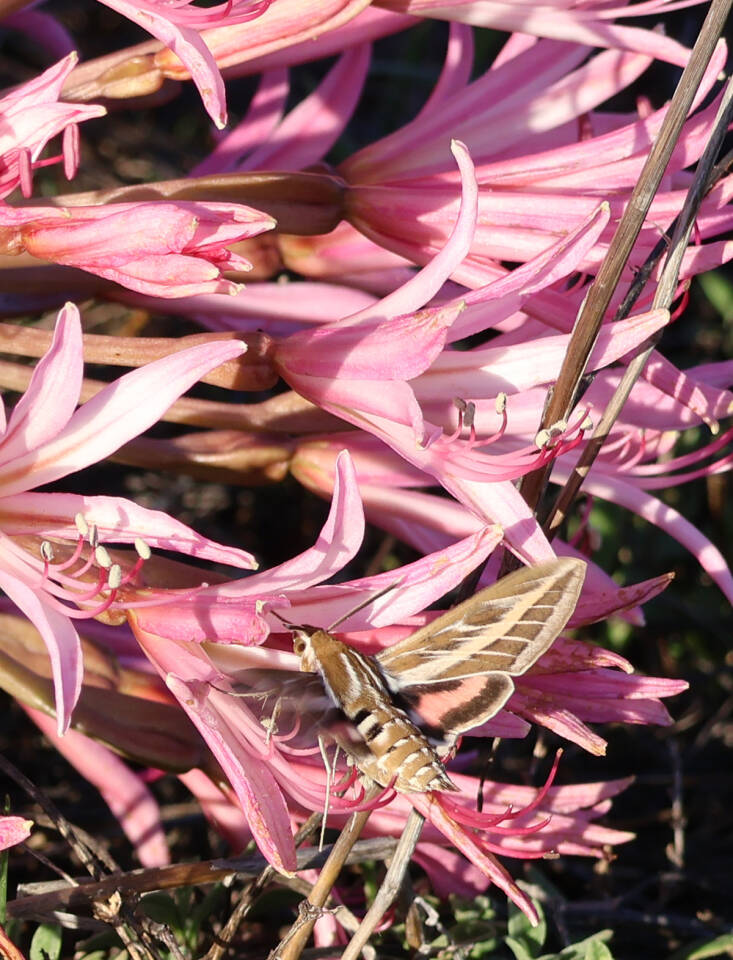

How long this display lasts depends on the weather, but it’s generally ten days to two weeks. Some days might be in the blazing high 80s, while others dip into cool 6’s and are shrouded in clouds and mist. The dry summer is at an end, and the winter rains are (hopefully) on their way, but autumn is variable. As the flowers fade, their starry framework turns brittle and their seeds are dispersed as they begin to tumble.
If you would like to see them, watch the weather around Nieuwoudtville in March, closely. If it rains, count three weeks out, make your plans, and pack your bags. You will not be sorry.
See also:
- Have Flowers, Will Travel: South Africa’s Superblooms
- Jaftha’s Flower Farm in Cape Town: A Painful History, A Bright Future
- Veldkool on the Menu: A Delicious Vegetable That Grows Wild in South Africa












Have a Question or Comment About This Post?
Join the conversation